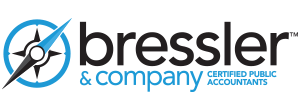ACA Open Enrollment for Insurance Ends February 15
The ACA open enrollment period under the Affordable Care Act (Obamacare) mandate is November 15 through February 15. If you don’t have health insurance coverage for 2015, you may be subject to larger penalties than last year unless you qualify for one of the many general or hardship exemptions. There are in excess of 30 possible exemptions from the penalty and some of the exemptions require you to complete and file an application for approval. If approved for an exemption that requires specific approval, you will be issued an exemption certificate number (ECN) that must be included on your tax return to claim the exemption.
For 2014, those with insurance coverage at work were given a “bye” because they didn’t have to prove it – just check a box on the form. For 2015, employers will be required to send out forms verifying coverage, and if you don’t have coverage the penalties will be stiff.
The approval form instructions cover several types of exemptions, will take some time to complete; and, once the application is submitted, the approval/denial process takes several weeks. Once others realize they need approval for certain hardship exemptions, however, you can expect the approval process to take considerably longer. While application forms are available online, each application must be printed, filled out manually, and then snail-mailed to the government for processing. With tax season already in full process, you don’t want your refund held up while you are applying for an exemption; so, start the process as soon as possible.
Not all exemptions require approval, so make sure your reason for an exemption requires advance approval before going to the trouble of completing and submitting the form. If you qualify for an exemption that doesn’t require prior approval, you can claim it on a new IRS form that will need to be included with your 2014 tax return. For example, if you are requesting an exemption because coverage is too expensive, you won’t need an exemption from the marketplace or the IRS, but you will need to fill out this new form.
If you didn’t have insurance for some period of time during the year (the penalty is computed by the month) and you don’t qualify for one or more of the exemptions, then you will be subject to the penalty for not being insured (the official name for the penalty is the “shared responsibility payment”).
The penalty is generally the larger of a flat dollar amount per individual or a percentage of your income, whichever is greater. For 2014, the full-year penalty, based upon the flat dollar amount, is $95 per adult and $47.50 per child, capped at $285 regardless of family size. The full-year penalty determined by income is 1% of the amount that your entire household income exceeds your tax filing income threshold. Next year’s penalty will be higher as your financial motivation to be insured increases substantially.
Example: For 2014, Kevin and Brett are married filing jointly with two minor children. Their household income is $55,000 and their filing threshold is $20,300 (their standard deduction of $12,400 plus the exemption amount of $3,950 each for both of them). So, their flat dollar amount for a full year would be $285, and their percentage of income amount would be $347.00 (($55,000 – $20,300) x 1%). Thus their penalty would be $347.00 for a full year without insurance or $28.92 per month for the family.
For the first year of the shared responsibility payment, 2014, the penalties are low. In 2015, the flat dollar amounts jump to $325 per adult and $162.50 per child (capped at $975), while the percentage of income jumps to 2%. Then, in 2016, the per-adult flat dollar amount goes to $695 and the child amount to $347.50 (maximum $2,085), while the percentage of income increases to 2.5%. If our prior example had taken place in 2016, Kevin’s and Brett’s penalty would be $2,085 (2 x $695 plus 2 x $347.50) since the flat dollar amount is larger than their percentage of income amount.
Kevin and Brett, based upon their income, would qualify for some amount of premium assistance credit that will help them pay the cost of their health insurance if they purchase coverage through a government marketplace. With the severe increase in penalties over the next two years, Kevin and Brett will need to consider whether the cost of health insurance (and the benefits that come with coverage) is a better option than paying the penalty.
If you have questions about the shared responsibility payment or penalty exemptions you may qualify for, give Bressler & Company a call at 559.924.1225. We’ve been training all year on this subject, and we can answer your questions.





